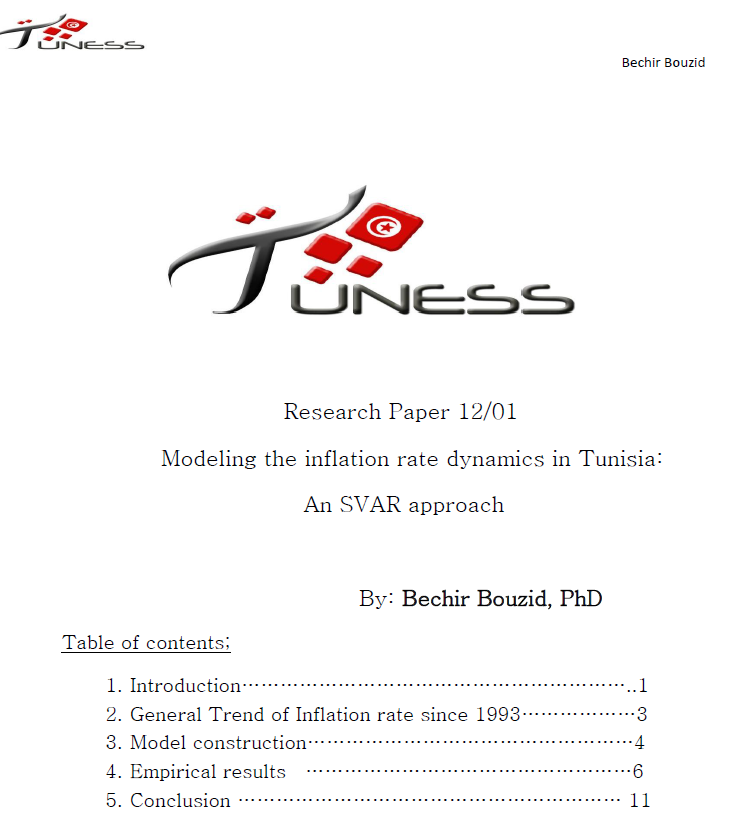The latest popular uprising in Tunisia has very often been described as the result of a distorted labor market that has not been able to absorb the growing flow of young and educated labor force. While this description does provide useful insights into the roots of the Tunisian revolution, one must not overlook the other macroeconomic factors that had, over time, fueled the popular discontent. The increasing cost of living had aggravated the vulnerability of large segments of the population that felt totally marginalized by the system in place. Very few researchers had attempted to explore the underlying factors that influence the dynamics of the inflation rate movements in Tunisia. In this note, we follow the recent strand of research by applying a Structural Vector Autoregressive model (SVAR) to shed some light on some of the channels, both contemporaneous and lagged ones, through which shocks to macroeconomic variables influence the inflation rate dynamics in Tunisia.
We will unfold the influence of three main shocks, that's the monetary shock, the supply shock and the external shock, by constructing a simple model to capture short and long run interactions amongst macroeconomic variables. The impulse response functions generated by the structural model are given a particular attention in this study. The main findings of this paper confirm that the recent instability of the inflation rate in Tunisia is not only influenced by external shocks generated by the sporadic interventions of the monetary authorities to allow marginal depreciation of the exchange rate or as result of shocks on the supply side. The major force factor of the inflation movement in Tunisia remains the core shocks (dynamics) to the price level itself. Those shocks appear, according to present model, to account for more than 70% of the inflation variance over a period of 2 years.
To access the full report please click here

Note prepared by Bechir Bouzid, M.Sc., PhD., TUNESS Research Team
